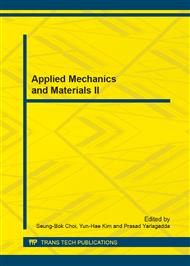p.39
p.45
p.49
p.54
p.58
p.63
p.69
p.73
p.77
Analysis on Stress and Contact Failure of BNC Connector Components
Abstract:
As a main coaxial cable connector, BNC connector, internal connections of which often takes the form of a clamping structure, is widely used in communication industry. Due to different production processes and standards, inadequate compaction or out-of-tolerance component size in BNC connector production may cause poor contact, lead to mismatch loss and influence the quality of signal transmission. Based on an actual BNC connector failure, this paper analyzes mismatch loss caused by poor contact of its components, mainly focusing on excessive contact of its PTFE components. Quantitative analysis is given on the cause and sizes of mismatch loss, as well as stress distribution, which provides reference for coaxial cable production and troubleshooting.
Info:
Periodical:
Pages:
58-62
Citation:
Online since:
December 2013
Authors:
Price:
Сopyright:
© 2014 Trans Tech Publications Ltd. All Rights Reserved
Share:
Citation:


